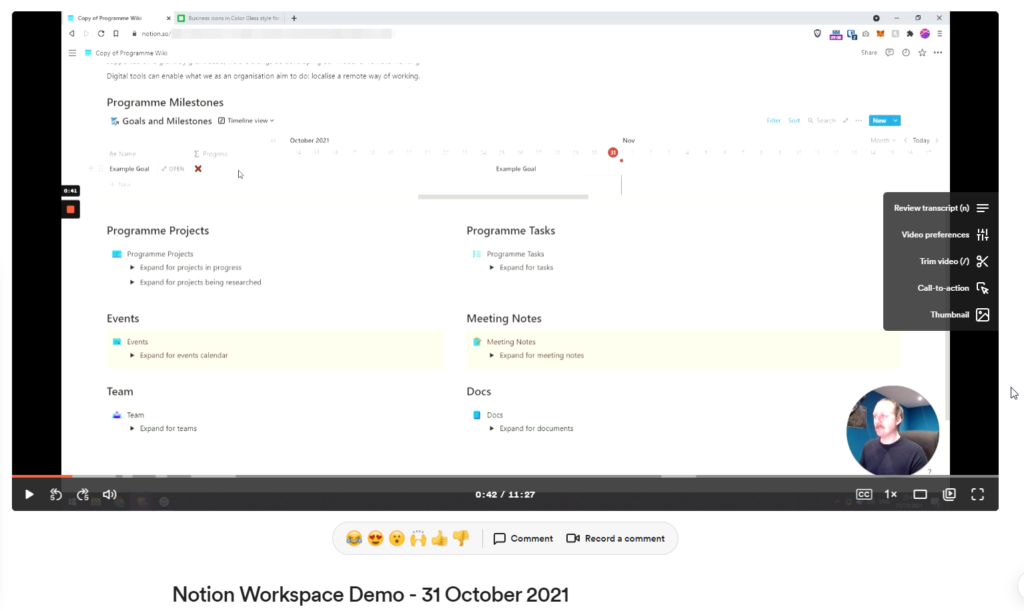Whether you’re a solopreneur or you’re running a business, success often hinges on one pivotal skill: the ability to handle lots of tasks without dropping the ball.
Last week we looked at the practice of Kaizen. If you missed that issue, you can read it here: The Gentle Practice of Kaizen
Today, I want to introduce you to David Allen’s methodology called ‘Getting Things Done’.
Read to the end to discover my experiences with it.
I’m someone who is always exploring different activities and business ideas. This brings a lot of new tasks and commitments with it though.
GTD was my way to try and streamline everything and stop feeling overwhelmed with tasks piling up.
Let’s dive in and demystify the GTD approach.
The GTD Basics
In a nutshell, GTD is all about “stress-free productivity”.
It revolves around five simple steps: capture, clarify, organise, reflect, and engage:
- Capture: Document all the tasks that you think you need to do.
- Clarify: Process what you’ve captured. Is it an actionable item (write the newsletter) or is it a project that needs to be broken down (start a newsletter)?
- Organise: Put items where they belong and give them start or due dates.
- Reflect: Revisit and evaluate your to-do list on a regular basis like each week.
- Engage: Everything is just procrastination unless you actually action your tasks.
These five steps take you from vague ideas to clear tasks. They’re designed to free your mind from the stress of trying to remember and organise everything.
GTD for Entrepreneurs: The Pros
Efficiency and Productivity
The GTD framework is an entrepreneur’s ally in their battle against time.
By getting all your tasks written down and organised, your brain is freed from the pressure to remember everything.
Now it can focus on problem-solving and innovation.
Stress Reduction
Stress can too easily be a big part of entrepreneurship.
There’s something about writing a list of tasks and seeing them on the page or screen that reduces that stress.
Better Perspective
Once all of your tasks are organised, you gain a bird’s eye view of everything on your roadmap.
This view helps you make better decisions and prioritise your tasks.
GTD for Entrepreneurs: The Cons
Initial Setup
GTD can take quite a bit of time to setup.
You have to first capture all of your tasks. Then organise them before even starting work on them.
This can be overwhelming for someone who already feels like they don’t have enough time.
Maintenance
GTD is not a set-and-forget system. But then, what system is?
You’re meant to do weekly reviews of your goals and tasks to maintain the system. (Note – this isn’t something I do 😉)
Complexity
GTD is simple on the surface. But actually implementing it can become complex, especially if you have a diverse range of tasks.
Mixing personal tasks (like buying a birthday card) with business ones (like booking a call) can lead to a chaotic space if you’re not careful.
I like to split my space up into different “domains”.

My Experience
When I first adopted the GTD system, I was using Notion.
If you’ve been following me for a while, you know that I use ClickUp now.
Capturing tasks should be simple. But I realised that if there was any sluggishness or resistance in my capturing process, I wouldn’t write it down.
When I was using Notion I had to make sure I had quick access to my task list to reduce this friction (and it was still a struggle then).
I’ll do a whole post specifically about how I capture tasks now but the short version is:
- The ClickUp app is slow
- The Todoist app is fast
- I want everything to live in ClickUp
- Now I use Todoist to capture tasks on the phone and push them to ClickUp
Capturing tasks was one hump to get over.
The other was realising that I didn’t have to follow the process exactly.
I love to follow systems and routines. But I suck at doing something like a weekly review. So that reflection step got cut out of my process almost completely.
Now I look at my backlog of tasks whenever I fancy. That could be three times a day or once a month.
The key, as with most things in life, is balance.
The beauty of GTD lies in its flexibility. It’s not a strict set of rules but a guide to help you develop your own tailored productivity system.
Implementing GTD Into Your Workflow
If you’re an entrepreneur or a business owner, I’d recommend giving GTD a try.
But be prepared for the initial time investment and understand that it’s not going to streamline your tasks overnight.
- Start Small: Don’t try to overhaul your entire system at once. Gradually incorporate GTD principles into your current workflow.
- Personalise: GTD is a framework. Adjust it to suit your needs and preferences.
- Use Tools: There are lots of tools out there to implement GTD effectively. My personal favourite is ClickUp but the key is to use the one you’re most comfortable with. As I said earlier, capturing tasks easily is key.
If you’re feeling like you’re drowning in a sea of tasks and projects, give GTD a try. Your future, highly productive self will thank you.


